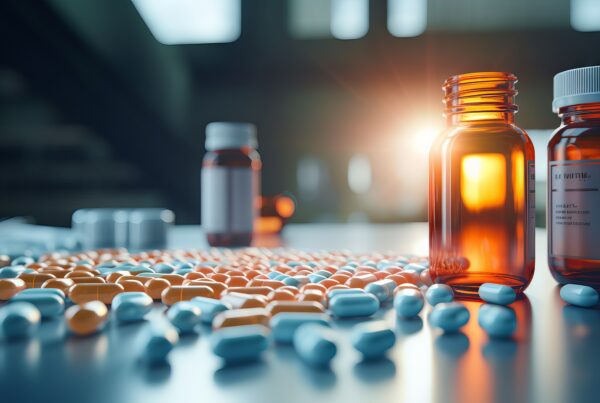
Harm reduction refers to a broad set of activities intended not solely to promote abstinence from drugs but also to reduce the negative consequences of drug use. The National Harm Reduction Coalition aims to “meet people where they are” by offering strategies to help them manage their use, use more safely, and in some cases, achieve abstinence. When it comes to addiction, abstinence is always the safest long-term option, but when addicts are not yet ready to stop using or enter treatment, harm reduction can minimize the damage that comes with addiction by addressing the dangerous conditions surrounding drug use.
Problems with Current Approaches to Managing Addiction
While the United States has historically criminalized drug use, creating stigma around the issue of addiction, harm reduction has become more popular, recognizing the problems associated with stigma and criminalization. A report in the Journal of Criminology analyzed the pros and cons of drug prohibition and acknowledged that enforcement of drug laws costs up to $707 million per year in Australia. According to the Center for American Progress, state governments in the U.S. spend $7 billion per year to incarcerate people for drug-related offenses. Given these figures, it is evident that the economic costs of criminalization are problematic.
Another problem linked to criminalization is that it hasn’t been effective. Per the Center for American Progress, research shows that the number of people arrested for drug possession in the United States has tripled since 1980. Six times as many people are arrested for drug possession compared to drug sales. What is clear is that the criminalization of drug use hasn’t gotten drugs off the streets, and people are still abusing these drugs. Even worse is the fact that opioid overdoses are on the rise, and Americans consume 80 percent of all opioids across the globe. Criminalization has not only been expensive; it has been largely ineffective.
Finally, it is important to consider that stigma can become problematic in societies that criminalize drug use and demonize harm reduction approaches. When addiction is viewed as a crime or a moral failing, people may fear seeking the help they need to stop using. They may fear criminal sanctions, in addition to carrying anxiety about being judged negatively by their communities.
Types of Harm Reduction and Their Benefits
Given the drawbacks of drug prohibition, some governments have called for harm reduction approaches, which have emerged as an alternative to criminalization. There are various forms of harm reduction, including the following:
- Medication-Assisted Treatment: Medication-assisted treatment (MAT) may not always come to mind when thinking of harm-reduction approaches, but MAT does fall under the harm reduction umbrella. Instead of requiring abstinence from all substances, this approach provides those in recovery with a replacement medication, called an opioid agonist. These medications are prescribed in pharmaceutical doses to treat opioid addictions that have not responded to other forms of treatment. Denmark, Germany, Switzerland, the Netherlands, and the United Kingdom have utilized this approach, and it has been found to be safe and effective. People who receive this form of treatment reduce opioid and cocaine use, are involved in less criminal activity, and see improvements in their wellbeing. MAT looks a little different in the United States when compared to other countries, as FDA-approved medications for opioid addiction include buprenorphine, methadone, and naltrexone.
- Increased Naloxone Distribution: Naloxone, a medication that is administered via injection or intranasally, can reverse an opioid overdose and reduce deaths. Historically, the medication has been available only via prescription or via administration in an emergency department or by emergency personnel. Canada has allowed citizens to access naloxone without a prescription since 2016, and naloxone kits and overdose prevention education have been offered at community centers and through outreach efforts.
- Overdose Prevention Sites: These sites provide a supervised setting in which trained staff and volunteers provide immediate overdose response as well as services like counseling and HIV testing. Canada has offered several of these sites, and while research on their effectiveness is limited, there have been no reported overdose deaths at these prevention sites. Another advantage of these sites is that they can offer clean needles to drug users and safely dispose of them after use.
- Drug Checking Services: Started in Europe in the 1990s, drug checking services allow users to analyze the content of their drugs and receive education about risks associated with drugs and safer methods of drug use. For instance, these services can help users detect fentanyl, a powerful and dangerous opioid, in street drugs. One drug checking site in Canada found that over 90% of heroin samples contained fentanyl, so this service can reduce fentanyl overdose risks significantly.
Pros and Cons of Harm Reduction Programs
While there may be some stigma surrounding them, there are benefits associated with harm reduction programs. For example, people who use overdose prevention sites or utilize drug checking services are protected from overdose deaths. Naloxone distribution can also save lives by preventing overdose.
In addition, overdose prevention sites, which offer sanitary needles to drug users, have been found to have numerous benefits, according to the CDC:
- People who use programs that offer clean syringes are more likely to enter treatment.
- Programs that offer clean needles reduce the spread of infections, including HIV and infections of the heart valves.
- These programs reduce the presence of soiled needles within the community, thereby protecting the public.
- People who use needle exchange services are significantly more likely to stop using drugs, which reduces their risks of overdose.
- Offering clean syringes significantly reduces healthcare costs by reducing the spread of infections.
While it is important to acknowledge the benefits of harm reduction approaches like needle exchanges, it is also necessary to highlight some of the drawbacks of these methods, which are as follows:
- They do not address the underlying issues leading to addiction. While harm reduction approaches can keep people safe while they are still using drugs, they do not provide any psychological treatment that gets to the root cause of addiction so that it can be addressed. Ultimately, the goal of harm reduction approaches should be for users to enter treatment, because even when used in safer settings, the damaging effects of long term drug abuse cannot be denied.
- Some locations do not offer these services. As the CDC reports, some states have laws that allow for programs like needle exchange, but other states do not. Some people may be unable to benefit from harm reduction services. Federal law currently provides funds to allow states to offer some versions of needle exchange services, but does not allow for funds to go toward the direct provision of syringes and other instruments used specifically for drug consumption.
- Medication-assisted treatment is not accessible to everyone. While MAT does fall under the umbrella of harm reduction, not everyone is able to access these services. Some people may be unable to afford treatment, whereas others may not be able to locate a provider in their areas or travel long distances to see an MAT provider.
The Bottom Line on Harm Reduction
Harm reduction approaches can be life-saving for drug users, as they can reduce the spread of deadly infections and decrease overdose risk. That being said, the ultimate goal of these programs should be to encourage users to enter treatment to address the underlying issues leading to addiction.
If you or a loved one is living with a substance use disorder, Mission Harbor Behavioral Health is here to help. We offer multiple levels of care, including partial hospitalization or intensive outpatient services. We are also proud to offer multiple treatment tracks with flexible scheduling to meet each patient’s needs. Contact us today to learn more.




